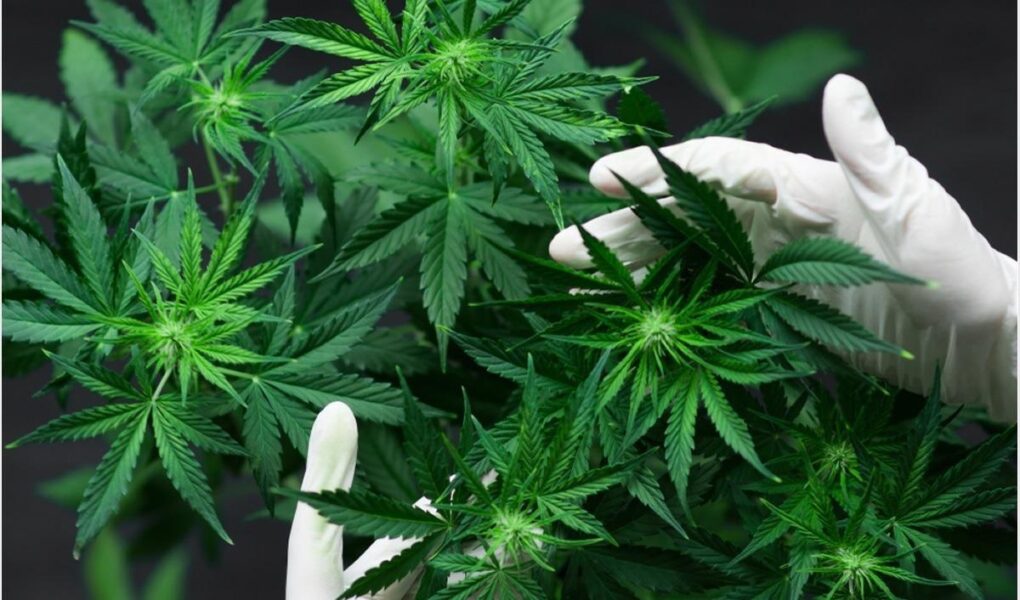Unlocking the Mysteries of Cannabinoids: Nature’s Versatile Compounds
In the expansive realm of botany, few substances have captured the attention of scientists, medical professionals, and wellness enthusiasts quite like cannabinoids. These intriguing compounds, primarily derived from the Cannabis sativa plant, are not merely the building blocks of psychoactive experiences; they are intricate molecules that hold the promise of a range of therapeutic applications. From alleviating chronic pain to enhancing mood and promoting overall well-being, cannabinoids invite us to explore their multifaceted role in both the natural world and modern medicine. As research continues to unveil their potential, understanding cannabinoids requires a journey into the delicate interplay of chemistry, biology, and the vast tapestry of human experience. Join us as we delve into this captivating subject, shedding light on what cannabinoids are, how they function, and why they are becoming increasingly vital in conversations about health and wellness.
Table of Contents
- The Science Behind Cannabinoids and Their Unique Properties
- Exploring the Therapeutic Potential of Cannabinoids in Medicine
- A Comprehensive Guide to Navigating Different Cannabinoid Products
- Best Practices for Safe and Effective Use of Cannabinoids
- Q&A
- In Retrospect
The Science Behind Cannabinoids and Their Unique Properties
Cannabinoids, the chemical compounds found in the Cannabis plant, interact with the human body’s endocannabinoid system (ECS), which plays a critical role in maintaining homeostasis. This complex system regulates various physiological functions, including mood, appetite, pain sensation, and immune response. When cannabinoids like THC (tetrahydrocannabinol) and CBD (cannabidiol) enter the body, they bind to cannabinoid receptors, mainly CB1 and CB2, to trigger a range of effects. This interplay can lead to unique therapeutic outcomes, making understanding these compounds essential for both scientific communities and users alike.
Research has uncovered various types of cannabinoids, each exhibiting distinct properties and potential benefits. Here are some of the most notable:
- THC: Known for its psychoactive effects, it offers pain relief and appetite stimulation.
- CBD: Non-psychoactive and celebrated for its anti-inflammatory and anxiolytic properties.
- CBC: Investigated for its potential antidepressant and neuroprotective effects.
- CBG: Shows promise for its antibacterial and anti-inflammatory characteristics.
| Cannabinoid | Main Effects | Potential Uses |
|---|---|---|
| THC | Psychoactive, pain relief | Chronic pain, insomnia |
| CBD | Non-psychoactive, anxiolytic | Anxiety disorders, epilepsy |
| CBG | Antibacterial, anti-inflammatory | IBD, glaucoma |
| CBC | Antidepressant, neuroprotective | Mood disorders, neurodegeneration |
Exploring the Therapeutic Potential of Cannabinoids in Medicine
The therapeutic appeal of cannabinoids lies in their complex interaction with the human body, primarily through the endocannabinoid system (ECS). This system plays a crucial role in regulating various physiological processes, including pain sensation, mood regulation, and immune response. Cannabinoids such as THC and CBD interact with ECS receptors, offering a range of potential health benefits. Among their promising applications, cannabinoids have been noted for their ability to:
- Alleviate chronic pain: Both THC and CBD have shown effectiveness in reducing pain perception.
- Mitigate anxiety and depression: Some studies suggest cannabinoids can provide relief from these mental health challenges.
- Support cancer treatment: Cannabinoids may reduce chemotherapy-induced nausea and enhance appetite.
- Aid in neuroprotection: Research explores their potential in managing conditions like Alzheimer’s and multiple sclerosis.
A deeper understanding of how these compounds work is opening new avenues in pharmacology. Ongoing research has resulted in various cannabinoid-based formulations entering the market, catering to patients with specific health needs. Noteworthy products include:
| Product Name | Main Ingredient | Use Case |
|---|---|---|
| Dr. Hemp’s Relief Oil | CBD | Chronic pain management |
| Pure THC Tincture | THC | Appetite stimulation |
| Calm Gummies | CBD + CBN | Anxiety relief |
As research expands, the potential of cannabinoids continues to captivate the medical community. With studies examining their efficacy across a wide array of conditions, cannabinoids could redefine standard treatment approaches and pave the way for innovative therapies that prioritize patient well-being.
A Comprehensive Guide to Navigating Different Cannabinoid Products
As the world of cannabinoids expands, understanding the different types of products available is essential for making informed choices. Cannabinoid oils, for example, come in various concentrations and flavors, providing options for both beginners and more experienced users. There are also edibles, which can range from gummies to infused beverages, offering a discreet and enjoyable way to consume cannabinoids. Other popular forms include topicals, designed for localized relief, and vapes, which allow for quick absorption and flavor variety. It’s important to consider your personal preferences, desired effects, and the methods of consumption that align with your lifestyle when exploring these products.
One key factor in navigating cannabinoid products is understanding the differences between CBD and THC among others. Here’s a quick comparison of some common cannabinoids to help you choose the right product for your needs:
| Cannabinoid | Effects | Legal Status |
|---|---|---|
| CBD | No psychoactive effect, promotes relaxation | Legal in most areas |
| THC | Psychoactive, euphoria, analgesic | Varies by location |
| CBG | Non-psychoactive, potential anti-inflammatory | Legal in most areas |
| CBC | Non-psychoactive, enhances mood | Legal in most areas |
When selecting cannabinoid products, it’s also crucial to examine the lab testing status and sourcing of the hemp used in production. Always look for brands that provide third-party lab results to ensure potency and purity. Additionally, consider factors such as personal tolerance levels, specific health goals, and potential side effects to tailor your cannabinoid experience effectively. The right choice can enhance not only wellness but also your overall enjoyment of these diverse products.
Best Practices for Safe and Effective Use of Cannabinoids
When considering the use of cannabinoids, it’s essential to prioritize health and safety. Start by consulting with a healthcare provider who is knowledgeable about cannabinoids, especially if you have pre-existing medical conditions or are taking other medications. This conversation can help you understand the potential effects, appropriate dosages, and any interactions that may occur. Additionally, it’s important to source cannabinoids from reputable distributors, ensuring that they undergo third-party testing for purity and potency. Here are some best practices to keep in mind:
- Start Low and Go Slow: Begin with a lower dose to assess your body’s reaction.
- Be Mindful of Delivery Methods: Different methods (oils, edibles, vaporizers) may affect onset time and duration.
- Maintain a Journal: Track your usage and reactions to identify what works best for you.
- Stay Informed: Research current studies and updates regarding cannabinoids for the latest information.
Incorporating cannabinoids into your wellness routine may require patience and experimentation. It’s beneficial to evaluate your overall goals and consider the context in which you are using them. For recreational use, moderation is key, while therapeutic use may require a tailored approach based on individual needs. Below is a simple table to summarize different cannabinoid types and their reported effects:
| Cannabinoid | Primary Effects |
|---|---|
| CBD | Calming, anti-inflammatory, non-intoxicating |
| THC | Psychoactive, analgesic, appetite stimulant |
| CBC | Antidepressant, anti-inflammatory, neuroprotective |
| CBG | Antibacterial, anti-inflammatory, neuroprotective |
Q&A
Q&A: Exploring the World of Cannabinoids
Q1: What exactly are cannabinoids?
A1: Cannabinoids are a diverse group of chemical compounds that interact with the body’s endocannabinoid system. They can be found naturally in the cannabis plant as well as produced synthetically. Each cannabinoid has unique characteristics and effects, making them a fascinating area of study in both medicine and wellness.
Q2: How do cannabinoids work in our bodies?
A2: Cannabinoids engage with the endocannabinoid system (ECS), a complex network that plays a role in maintaining homeostasis within the body. By binding to cannabinoid receptors like CB1 and CB2, these compounds can influence various physiological processes, including pain sensation, mood regulation, and immune response.
Q3: What are some common cannabinoids found in cannabis?
A3: The two most well-known cannabinoids are THC (tetrahydrocannabinol) and CBD (cannabidiol). THC is primarily associated with the psychoactive effects of cannabis, giving users a “high.” In contrast, CBD is non-psychoactive and has garnered attention for its potential therapeutic benefits, including anxiety reduction and anti-inflammatory properties.
Q4: Are there other cannabinoids worth knowing about?
A4: Absolutely! Beyond THC and CBD, there are over 100 cannabinoids identified in cannabis. Some noteworthy examples include CBG (cannabigerol), believed to have potential antibacterial and anti-inflammatory properties, and CBN (cannabinol), which may promote sleep. Research into these lesser-known cannabinoids is ongoing, paving the way for innovative applications in health and wellness.
Q5: Can cannabinoids be used for medical purposes?
A5: Yes, cannabinoids have shown promise in various medical applications. THC is often prescribed for pain relief and appetite stimulation, particularly for patients undergoing chemotherapy. CBD is used in treating epilepsy, anxiety, and certain types of chronic pain. However, it’s essential to consult with healthcare professionals to understand the right dosage and potential interactions.
Q6: What about the legality of cannabinoids?
A6: The legal landscape surrounding cannabinoids is complex and varies significantly across different regions. While THC is still illegal in many places, CBD has gained legal status in several countries and states. It’s crucial to check local laws and regulations before purchasing or using cannabinoid products.
Q7: Are there any risks associated with cannabinoid use?
A7: While some cannabinoids offer therapeutic benefits, they may also pose risks. THC can lead to impaired cognitive function and increased anxiety in some individuals, particularly at high doses. Additionally, the long-term effects of cannabinoid use are not fully understood, and caution is advised, especially for inexperienced users or those with pre-existing health conditions.
Q8: What’s the future of cannabinoid research?
A8: The future of cannabinoid research is bright, with a growing interest in understanding their therapeutic potential and safety profiles. As societal attitudes toward cannabis continue to evolve, researchers are delving deeper into how cannabinoids can enhance health and wellness. With ongoing studies and advancements, who knows what new possibilities await in the realm of cannabinoids?
Q9: Where can I find cannabinoid products?
A9: Cannabinoid products are increasingly available in various forms including oils, edibles, topicals, and capsules. They can typically be found in dispensaries, health food stores, and online marketplaces. Be sure to choose reputable brands that provide third-party testing for quality and potency.
Q10: How can I stay informed about cannabinoids?
A10: Stay curious! Follow reputable sources, subscribe to newsletters from scientific journals, and join communities discussing cannabis research. Engaging in discussions and attending seminars or webinars can provide a wealth of knowledge as the field of cannabinoid research continues to expand.
In Retrospect
As we draw the curtain on our exploration of cannabinoids, we find ourselves at the intersection of ancient practices and modern science. These compounds, once shrouded in mystery and stigma, have emerged as key players in a burgeoning field of research and therapeutic potential. Whether used for relaxation, pain relief, or simply the pursuit of a deeper understanding of human wellness, cannabinoids invite us to reconsider our relationship with nature’s chemistry.
With ongoing studies continuously illuminating the complexities of the endocannabinoid system, the future holds promise for innovative treatments and enhanced quality of life. As society grapples with the ethical, medical, and recreational implications of cannabis, one thing remains clear: cannabinoids are much more than mere compounds. They symbolize our innate curiosity and desire for connection—both within ourselves and with the world around us.
In this evolving narrative, each discovery unveils new questions, urging us to remain open-minded and informed. As we close this chapter on cannabinoids, let us venture forward with a spirit of inquiry, ready to embrace the potential that lies ahead.



